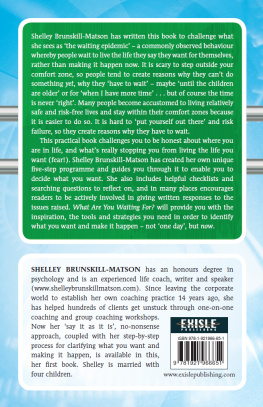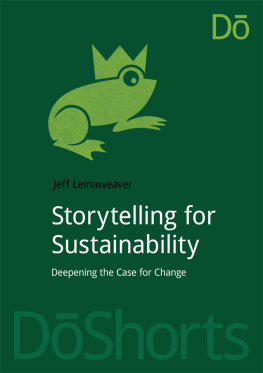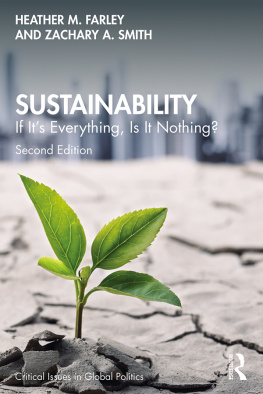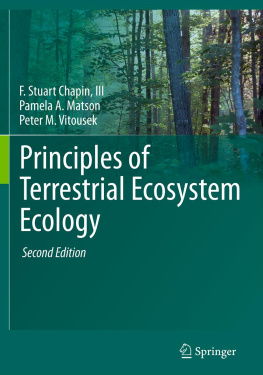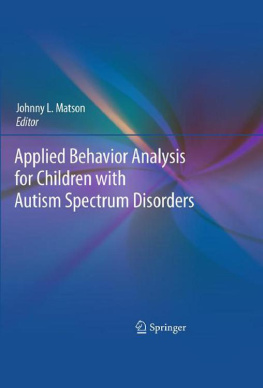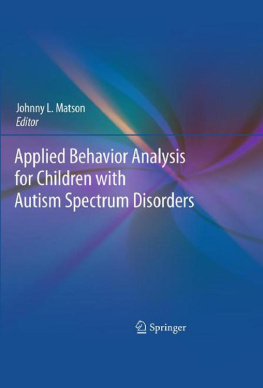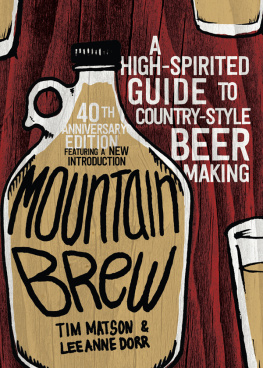PURSUING SUSTAINABILITY
PURSUING SUSTAINABILITY
A Guide to the Science and Practice
PAMELA MATSON,
WILLIAM C. CLARK, AND
KRISTER ANDERSSON
PRINCETON UNIVERSITY PRESS
Princeton and Oxford
Copyright 2016 by Princeton University Press
Published by Princeton University Press, 41 William Street,
Princeton, New Jersey 08540
In the United Kingdom: Princeton University Press, 6 Oxford Street,
Woodstock, Oxfordshire OX20 1TR
press.princeton.edu
All Rights Reserved
ISBN 978-0-691-15761-0
British Library Cataloging-in-Publication Data is available
This book has been composed in Charis
Printed on acid-free paper.
Printed in the United States of America
1 3 5 7 9 10 8 6 4 2
Contents
Preface
This book provides a general framework to help people interested in mobilizing knowledge to promote sustainability. We wrote it to complement the many excellent books, courses, and programs that are focused on specific aspects of sustainability: works on the use of land and water, the production of energy and food, corporate responsibility, the challenges of governance and conflict resolution, the pursuit of poverty alleviation and equitable growth. Our goal is not to supplant those more focused efforts but, rather, to sketch a broad perspective on sustainability that places those efforts in a broader context, with an appreciation for the interrelationships among them. The book could therefore be used as a companion or background reading for courses on topics such as sustainable energy, agriculture, or urbanization. It could also serve as a short guide or primer for students and practitioners at all levels who are seeking a more systematic and comprehensive platform on which to base their own pursuits of sustainability.
To these ends, we have tried to write this book as if it is part of a conversation with our readers over important issues in sustainable development, rather than as an argument that we want to win. This has meant keeping the text as short and readable as possible, leaving out many important topics. It has meant, due to our collaboration, addressing a broader sweep of the vast range of material relevant to sustainability than any of us could have done alone; but within that range, we have focused on telling a decidedly interdisciplinary story. Our goal of preparing an accessible primer or companion guide has led us to avoid extensive citations in favor of suggestions for a limited number of further readings at the end of the book. It has also involved a constant battle against disciplinary jargona battle that we know we havent altogether won. An extended glossary of essential terms, linked to places where those terms are first introduced in the text, is our attempt to limit the resulting damage. We hope that the result of our efforts, combined with your own personal passions, knowledge, and experience, will help you join us in nudging the world along a transition toward sustainability. All our children, grandchildren, and generations beyond are counting on it.
Acknowledgments
The ideas in this book reflect our own personal learning through decades of individual research, teaching, and outreach efforts, but most especially they reflect what we have learned from a number of close colleagues. Among the great many people to whom we give our thanks we owe a special debt to Partha Dasgupta, Bob Kates, Bill Turner, Lin Ostrom, John Schellnhuber, and John Bongaarts. With them, we have tried in large and small ways to formulate a clear statement of what is needed for a transition to sustainability. To them, we say thank you for the inspiration, ideas, and encouragement to keep at it.
Many others have motivated and inspired us. We especially thank Peter Vitousek, Anni Clark, Carla Andersson, Stephen Carpenter, Roz Naylor, Ruth DeFries, Ganesh Shivakoti, Danny Lam, Diana Liverman, Julia Novy-Hildesley, Banny Banerjee, Theo Gibbs, and our children, Liana and Michael Vitousek, Graham and Adam Clark, and Markus Andersson.
The book has benefited from the advice of many reviewers. To them we give all our thanks (and assign no blame). Kai Lee, Ruth DeFries, and Kimberly Nicholas provided incredibly useful in-depth reviews of the first draft, and Kai and Kim went on to provide equally high-quality comments on the second. Noelle Boucquey, Andy Lyons, Jesse Reeves, Alan Zarychta, Kelsey Cody, and many students in our undergraduate classes at Stanford, Harvard, and University of Colorado wrestled with and commented on the book in its early drafts.
The various versions of this book could not have been completed without the intellectual and logistical contributions of Noelle Boucquey and Peter Jewett. To them we give our deep thanks for helping make the book a reality.
Over the years, many funders supported the research and actions that led us to this book, and we thank them all. For the book writing, we are particularly thankful for partial support from Italys Ministry for Environment, Land and Sea, and, of course, our universities.
PURSUING SUSTAINABILITY
CHAPTER 1
Pursuing Sustainability: An Introduction
Sustainability is a term we hear all around us. Corporations brand themselves as sustainable and attempt to build sustainability goals, measures, and metrics into their business plans and supply chains. State and local governments set sustainability targets and pursue them, installing efficiency standards and practices, encouraging the use of public transportation systems, and incentivizing citizens to reduce, reuse, and recycle. Universities compete for sustainability awards that recognize efforts ranging from improving energy and water use efficiency to curricular offerings. Researchers focus their attention on the development of new knowledge and technologies to promote sustainability. Consumers consider sustainability concerns as they buy organic, or buy certified sustainable seafood or wood products. Citizens strive to reduce their environmental footprints on the planet out of a sense of responsibility to their children and grandchildren.
Sustainable development, likewise, is a widely used term. It frequently appears in high-level discussions of the United Nations, the World Bank, and non-governmental organizations (NGOs) such as CARE and WWF and is a fundamental objective of the European Union and of many nations rich and poor. The World Business Council for Sustainable Development counts many leading global companies among its members. These and similar organizations invest in efforts to help countries, companies, and communities develop not just in the near term but for the long-term benefit of people.
While the terms sustainability and sustainable development are often used by different communities of people, the vast majority of these uses have something very important in common: a realization that our ability to prosper now and in the future requires increased attention not just to economic and social progress but also to conserving Earths life support systems: the fundamental environmental processes and natural resources on which our hopes for prosperity depend. Because of that commonality, we use the terms interchangeably. We believe that the take-home messages of this book are important for both.
THE EVOLUTION OF SUSTAINABILITY THINKING
Sustainability is an old idea. Societies for centuries have recognized the importance of demanding no more of the environment than it can supply over the long term. This recognition is evident in long-standing ideas about fallowing fields and conserving game and protecting water sources. The concept of sustainable development in its modern form, however, was most famously articulated by the United Nations World Commission on Environment and Development (WCED) in 1987. As Gro Brundtland, the commission chairwoman, wrote at the time: Environment is where we live; and development is what we all do in attempting to improve our lot within that abode. The two are inseparable. The commission argued that


